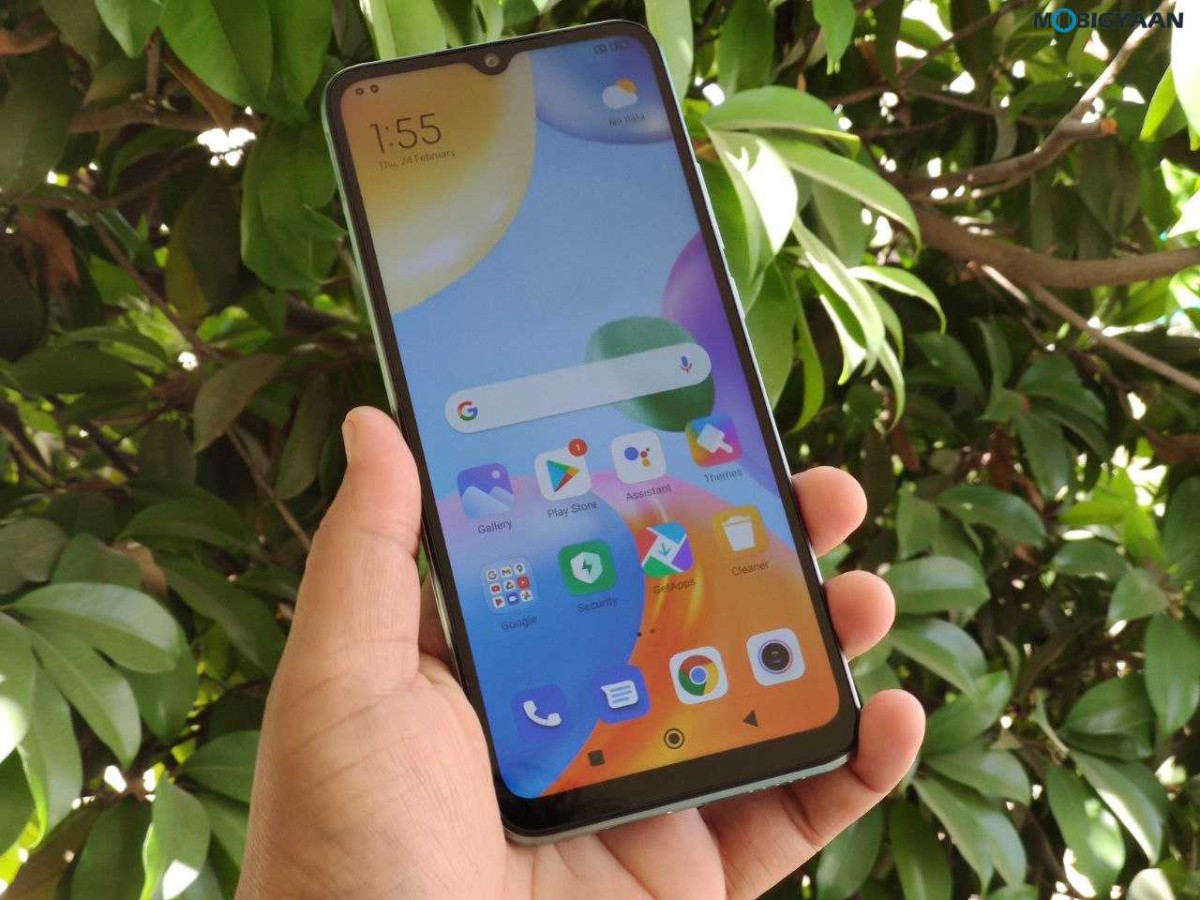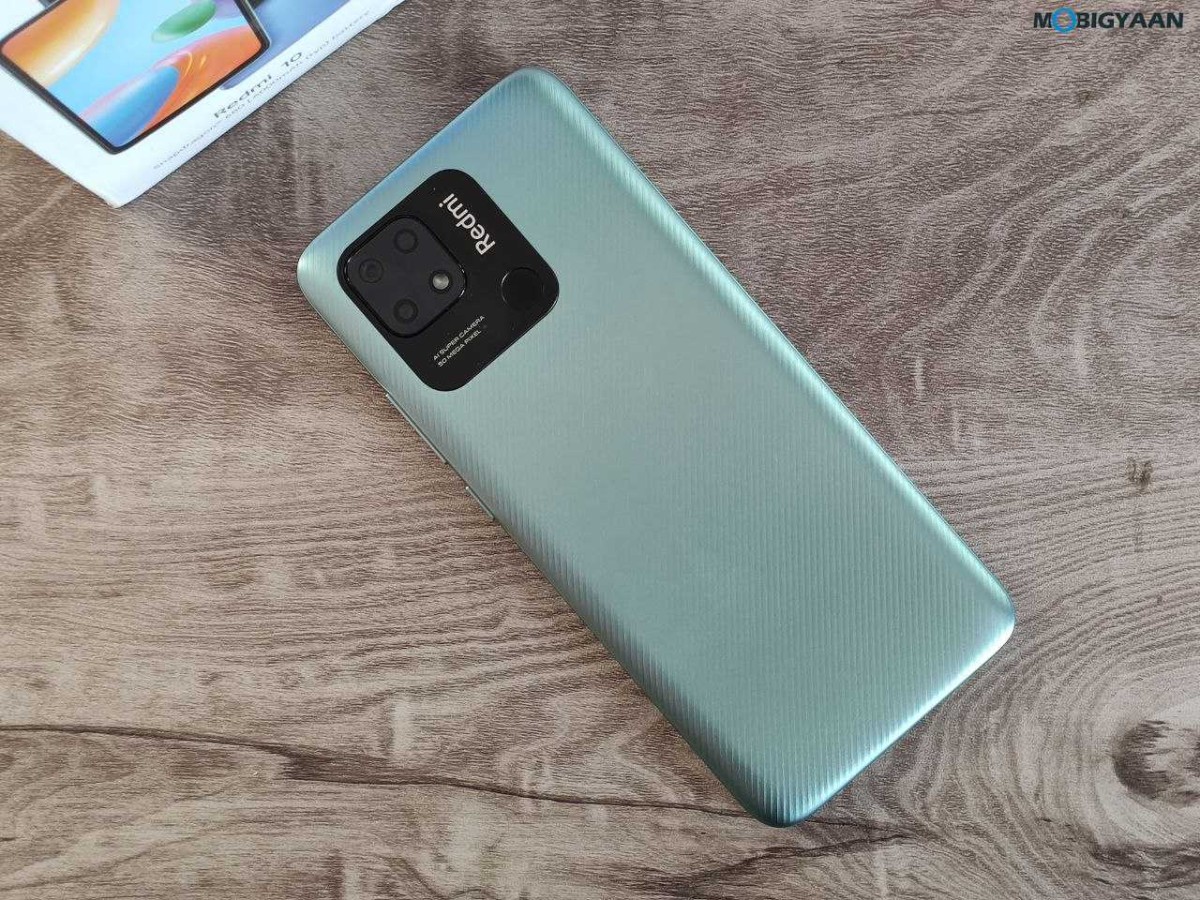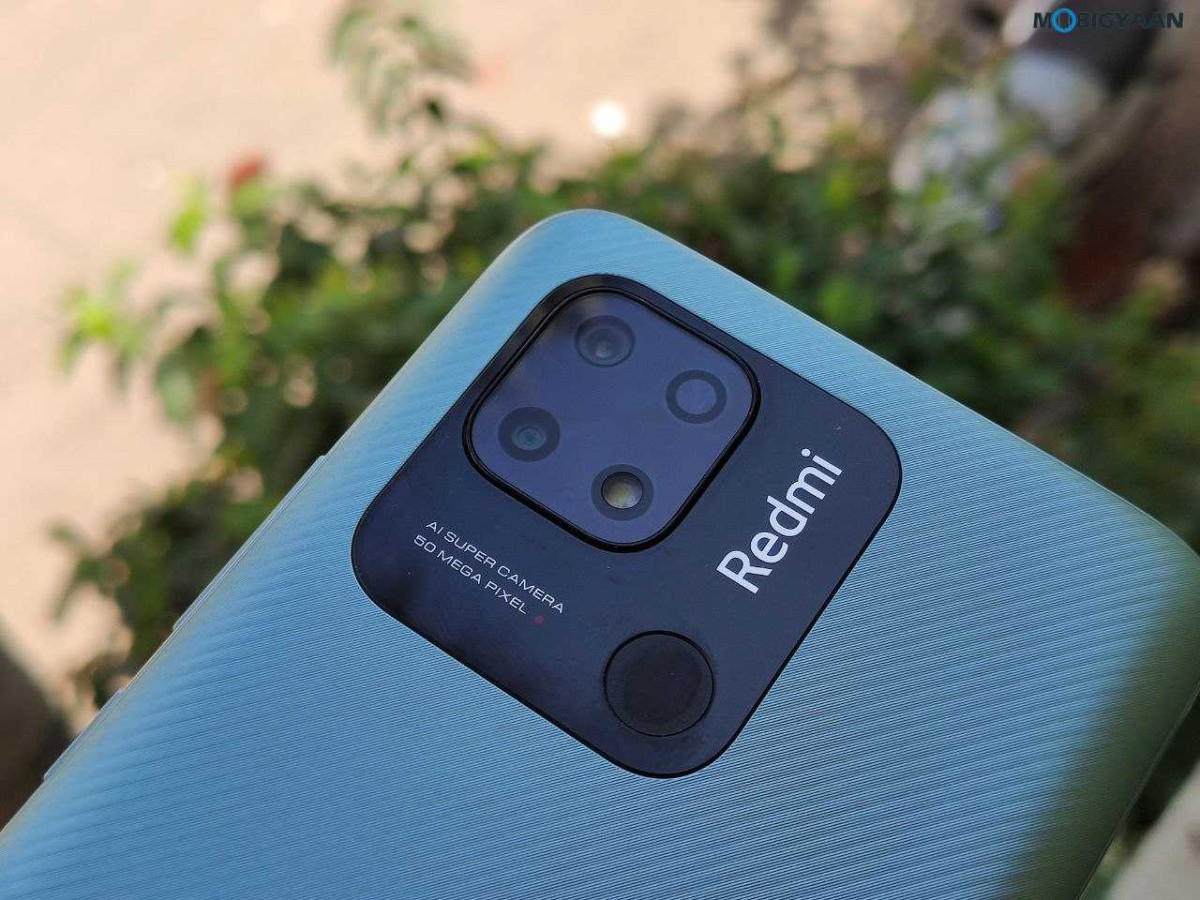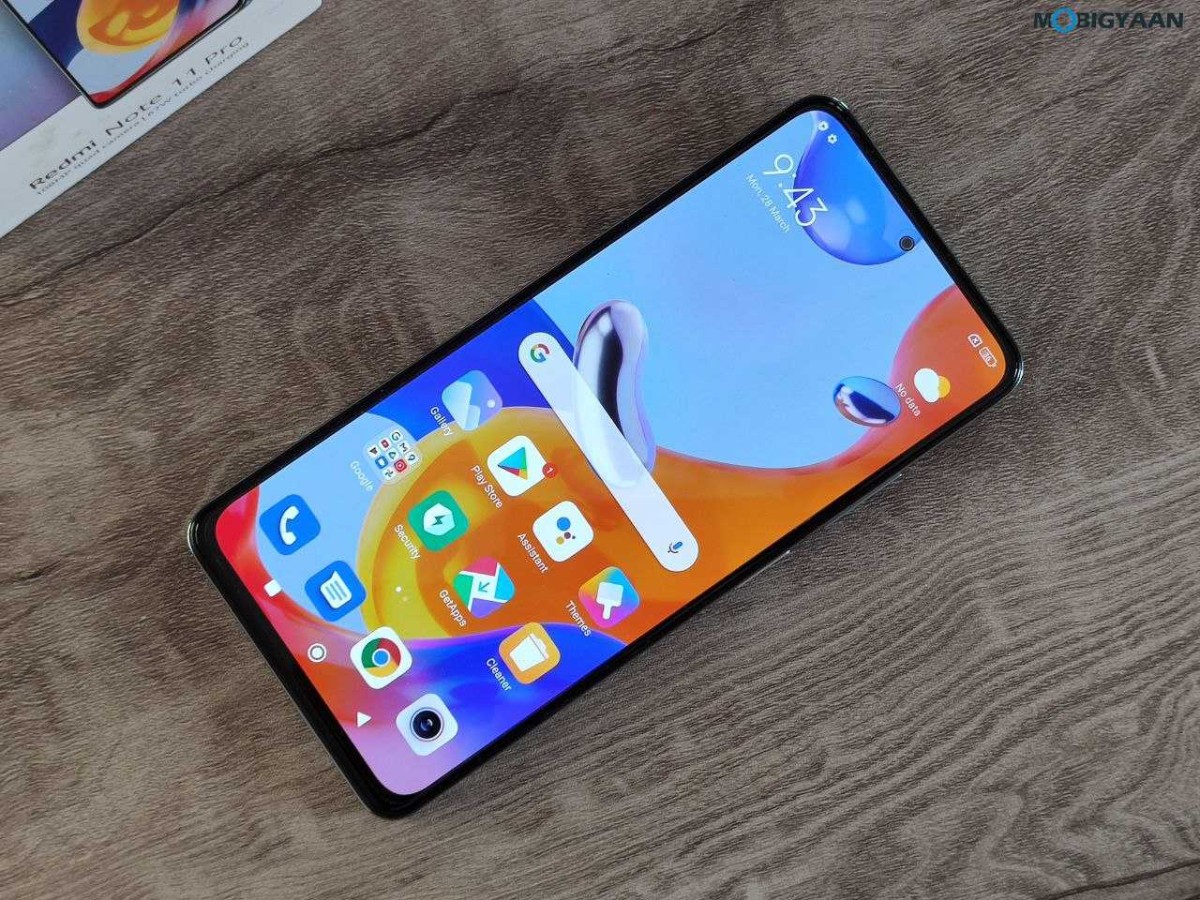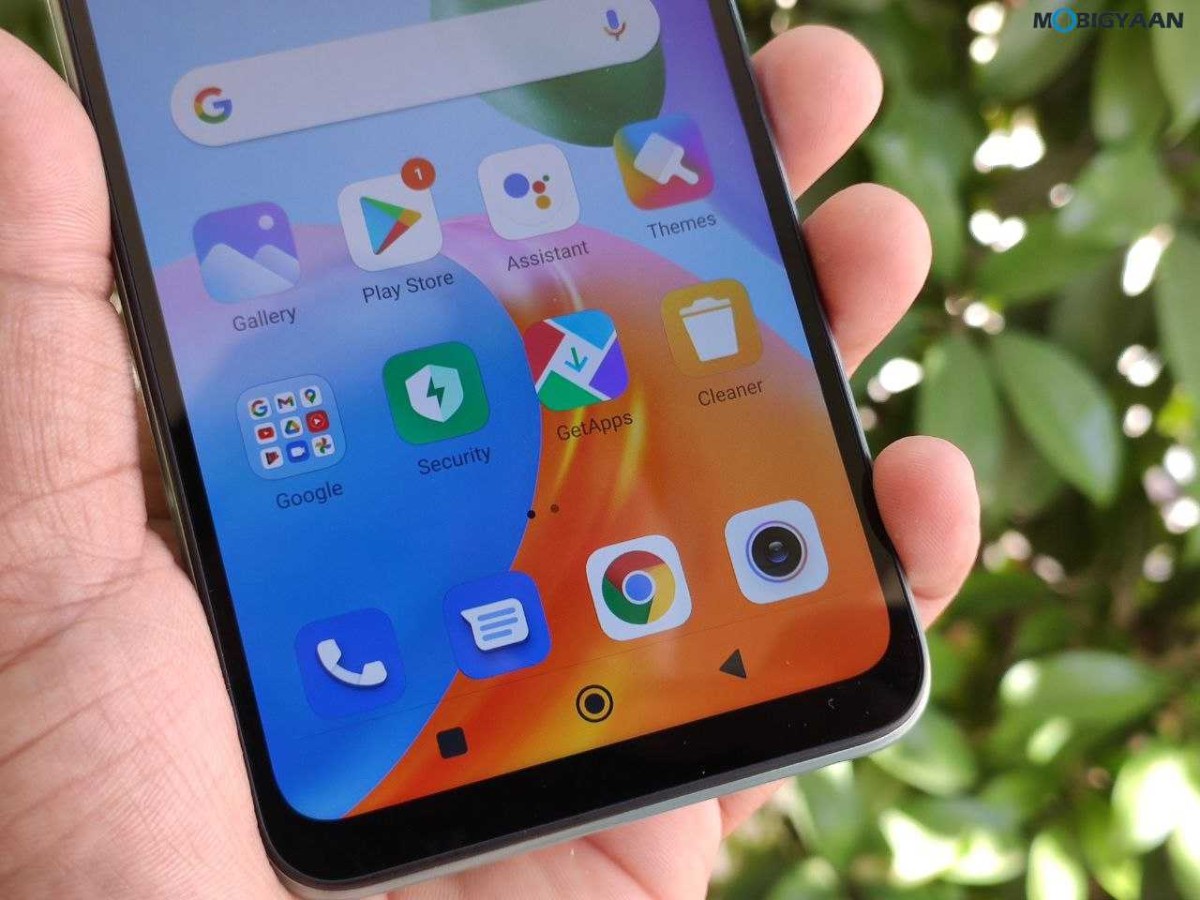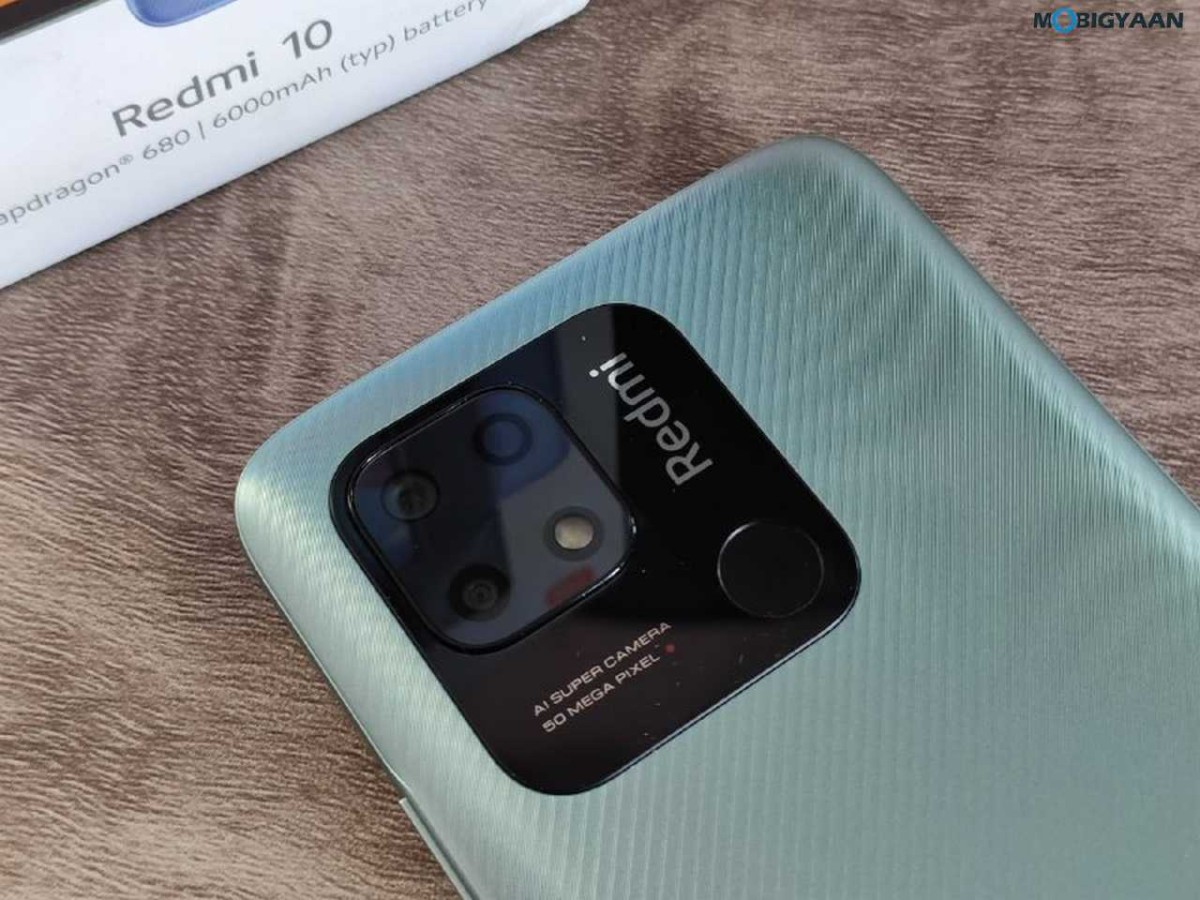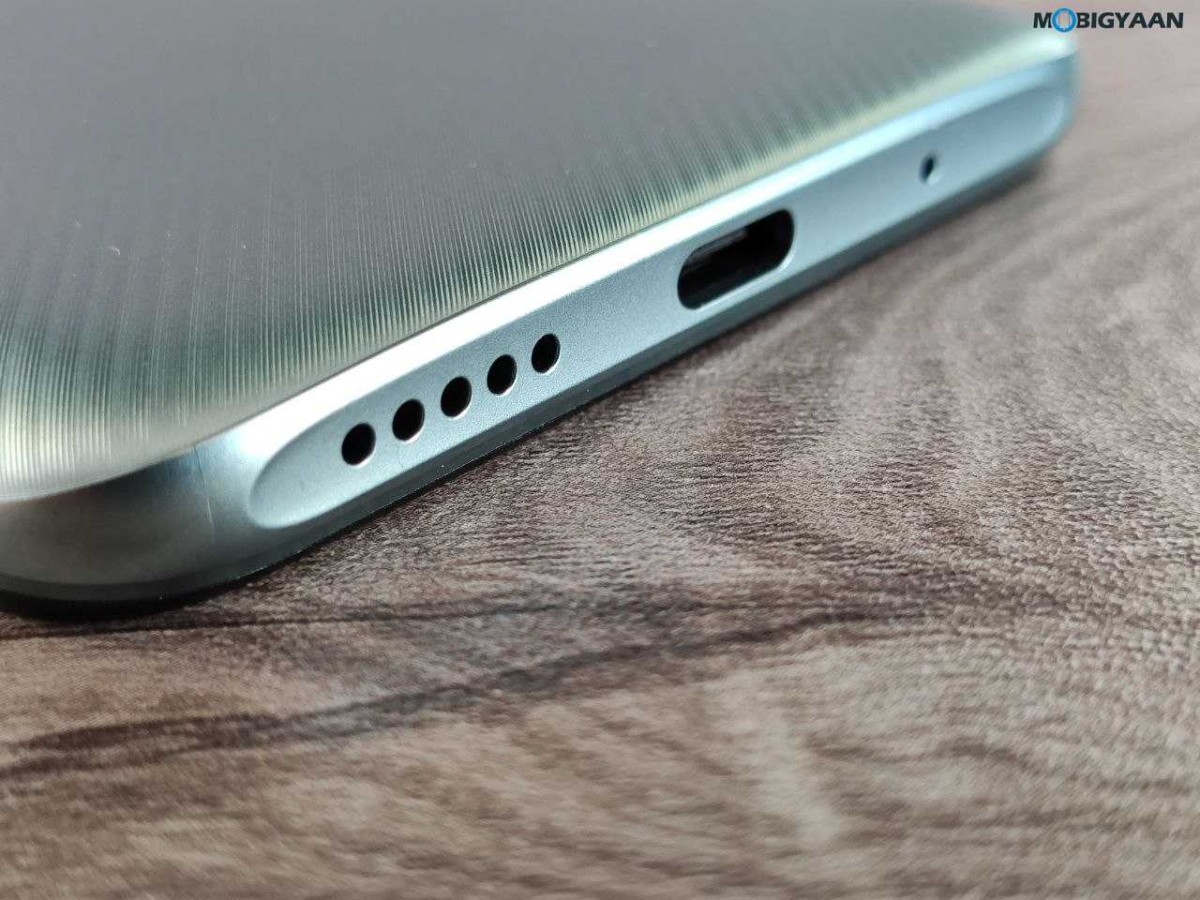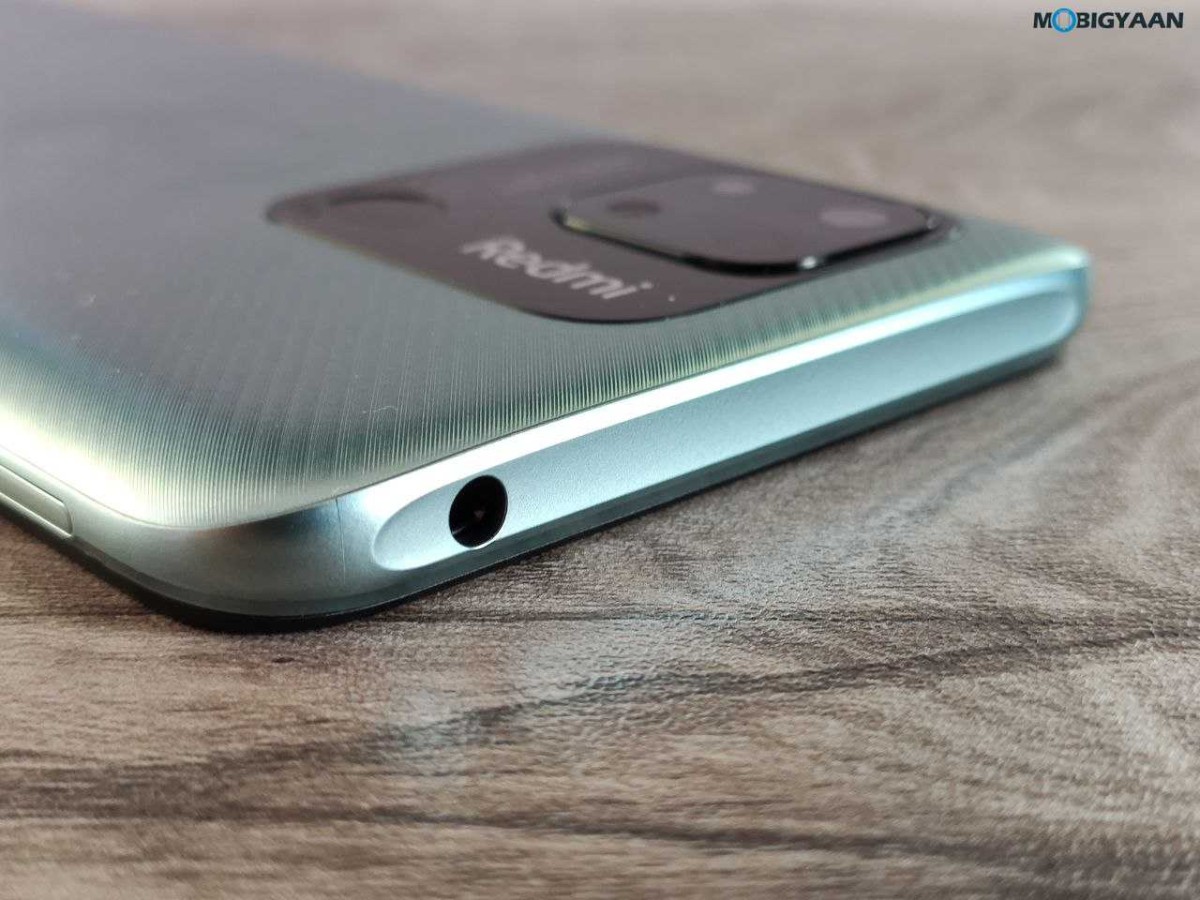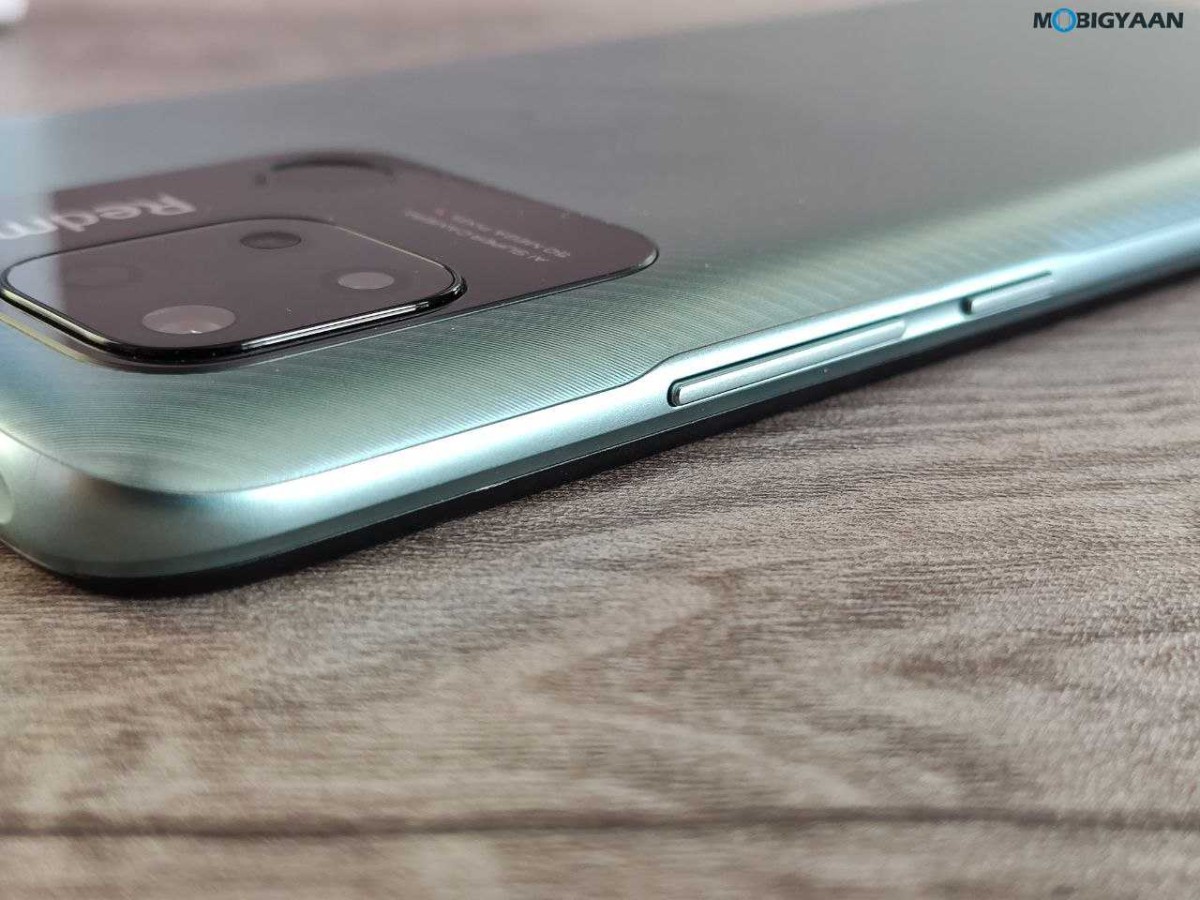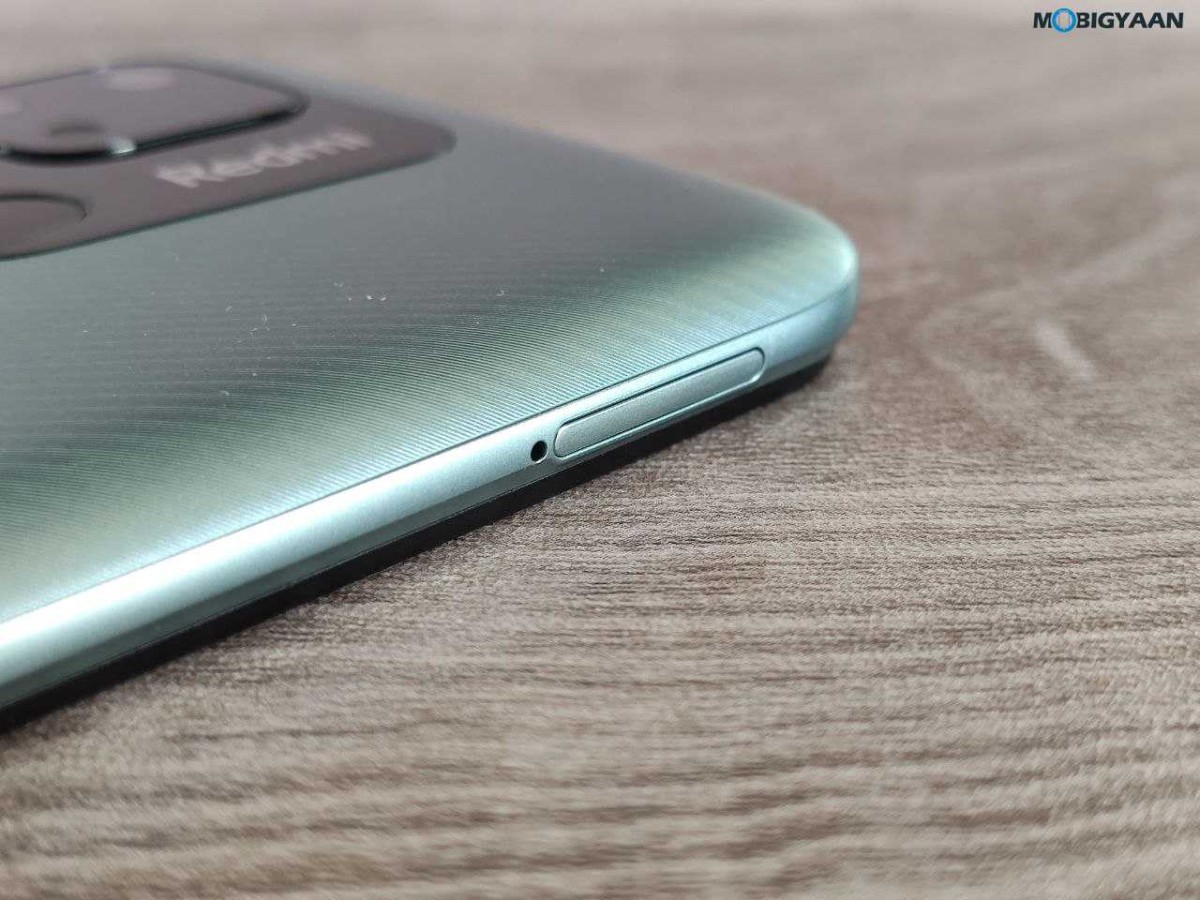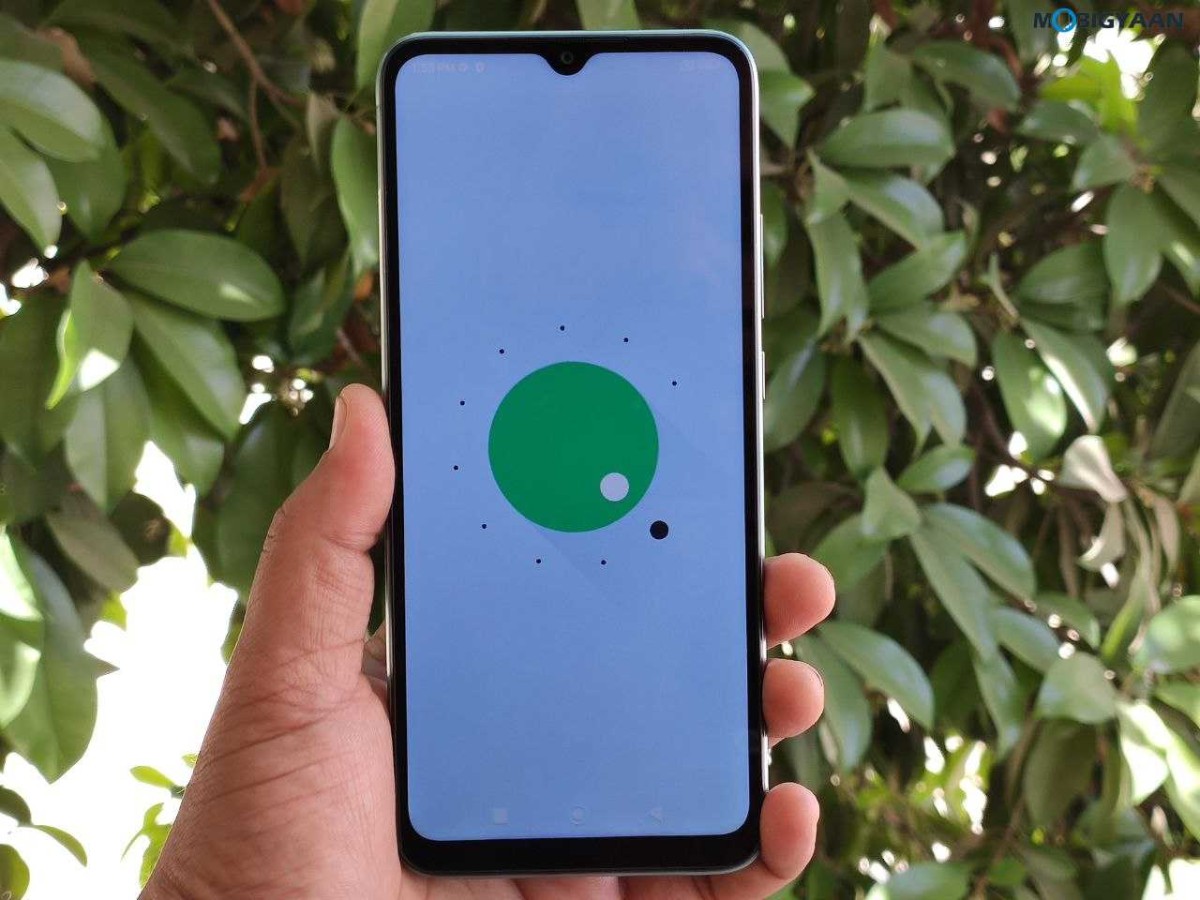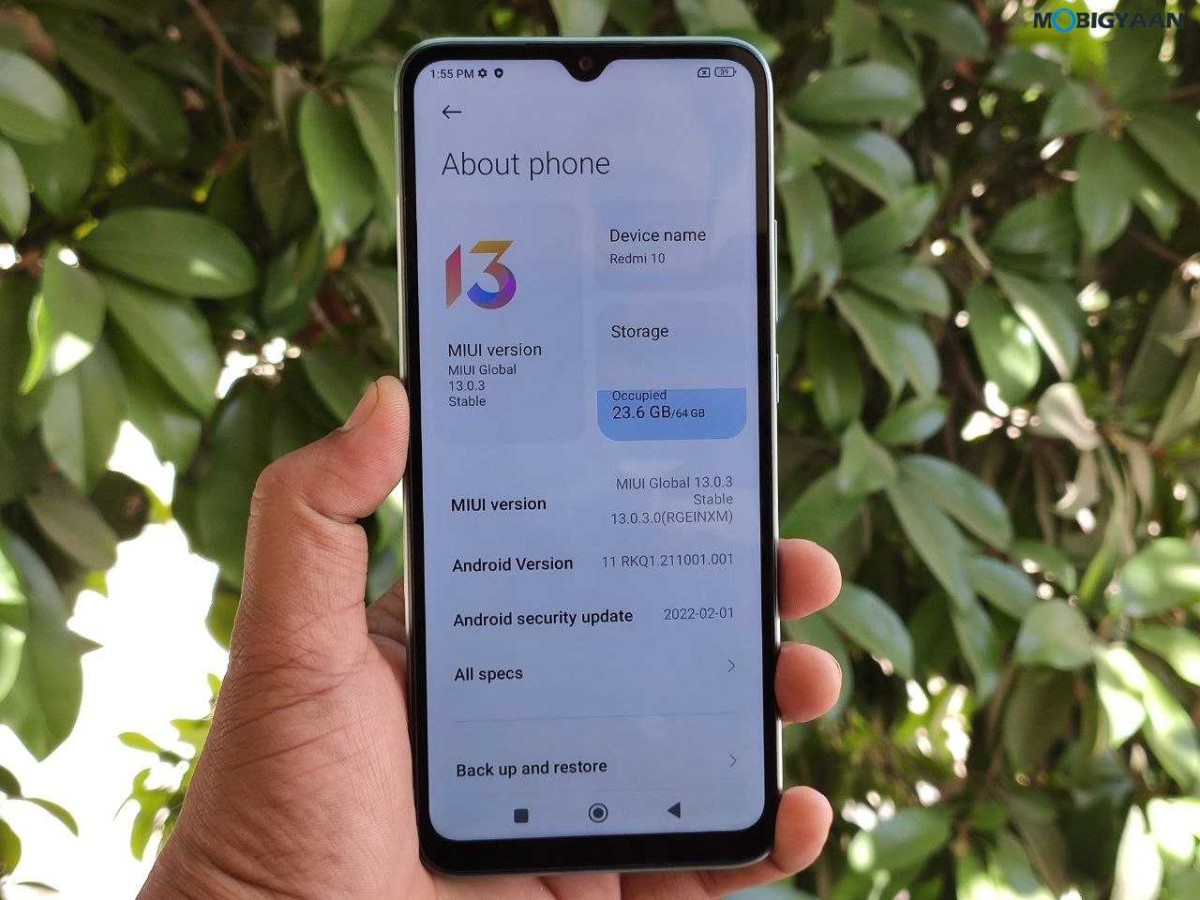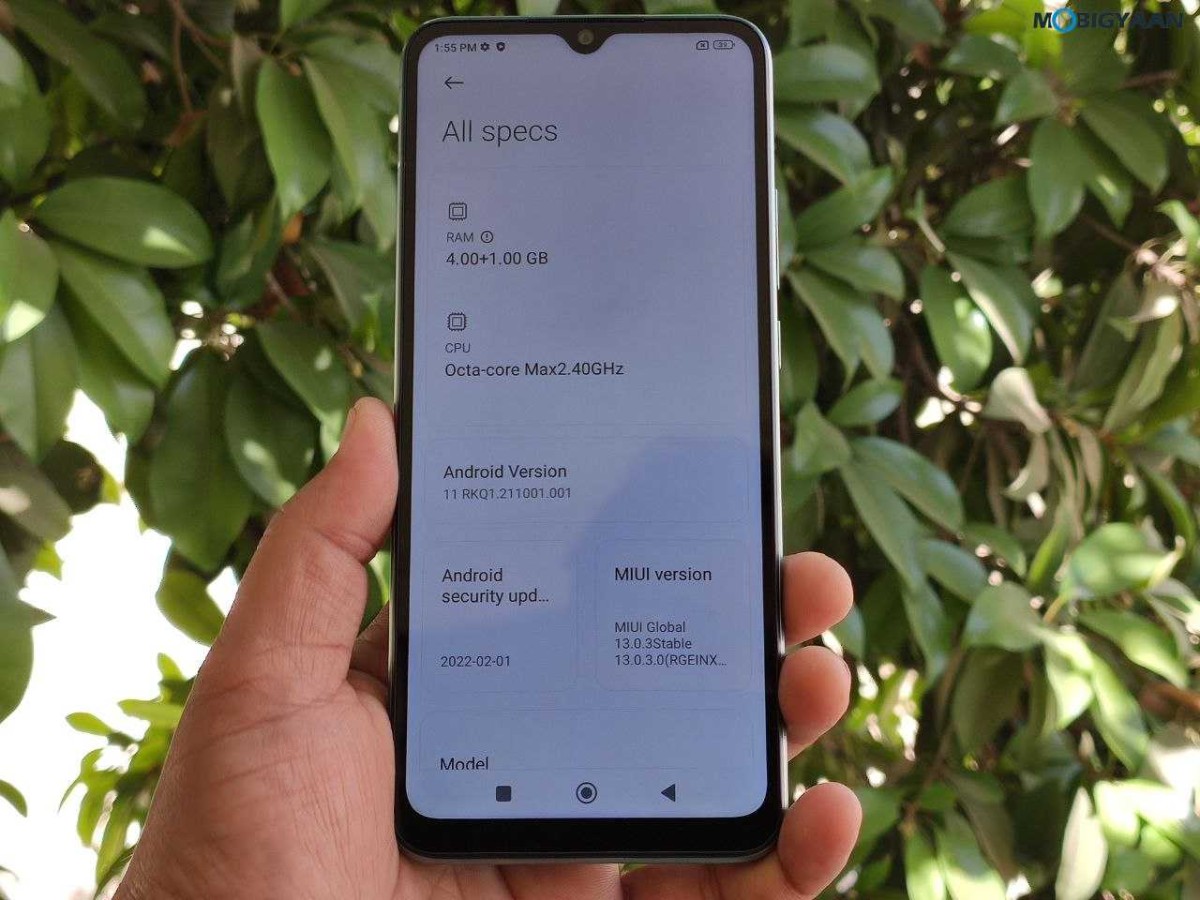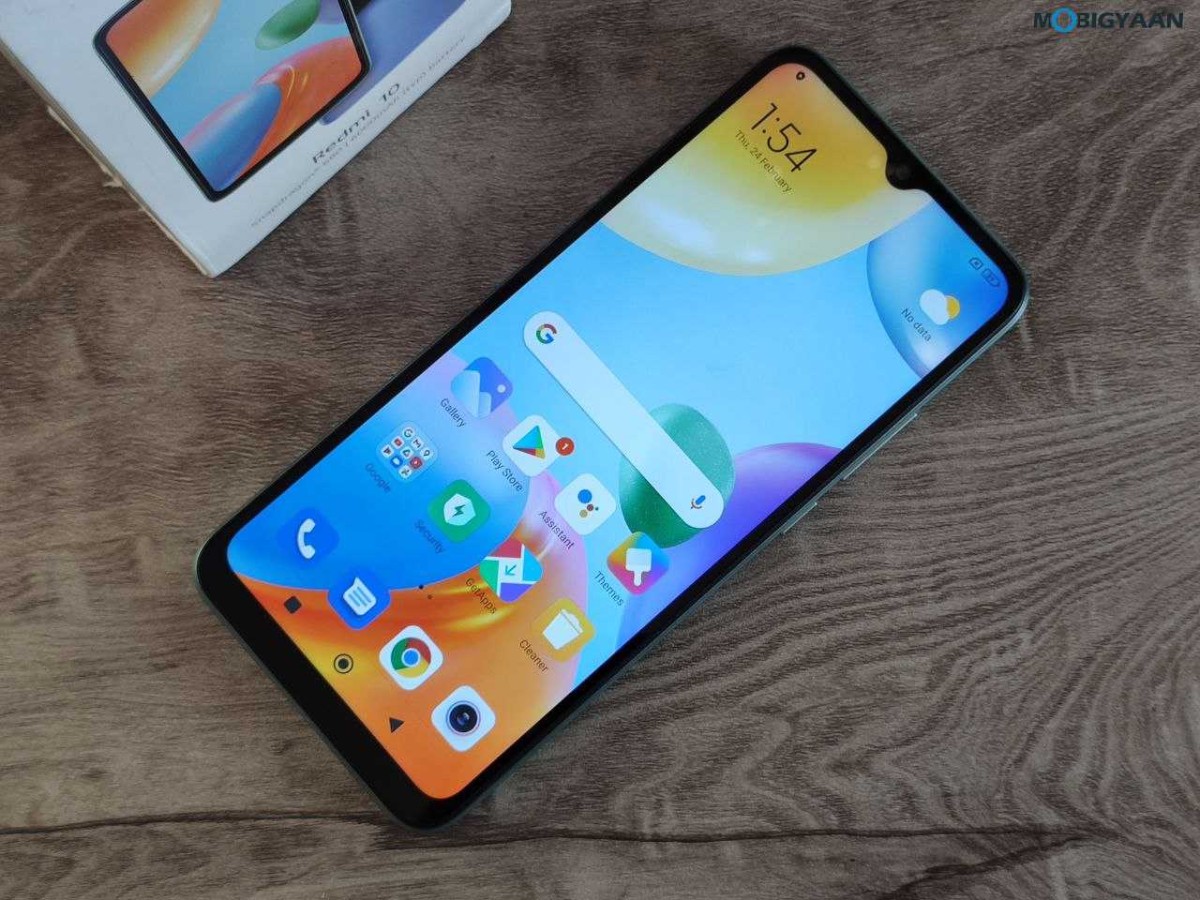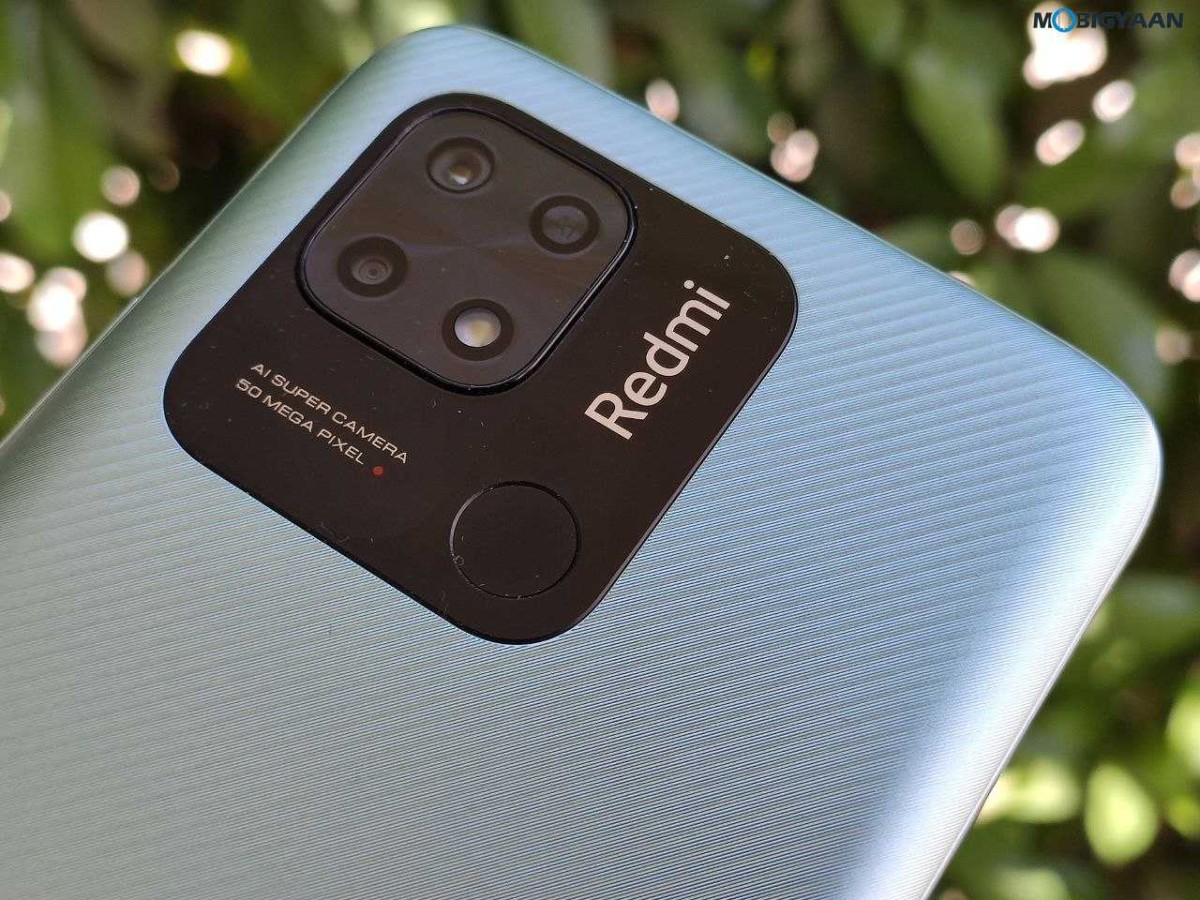Xiaomi India has launched its budget smartphone, Redmi 10 in India featuring a larger 6,000 mAh battery, 6nm Snapdragon 680 CPU, 18W fast charging, and comes at a price of ₹10,999 for its 4 GB + 64 GB variant. Here’s our first look at the Redmi 10 smartphone.
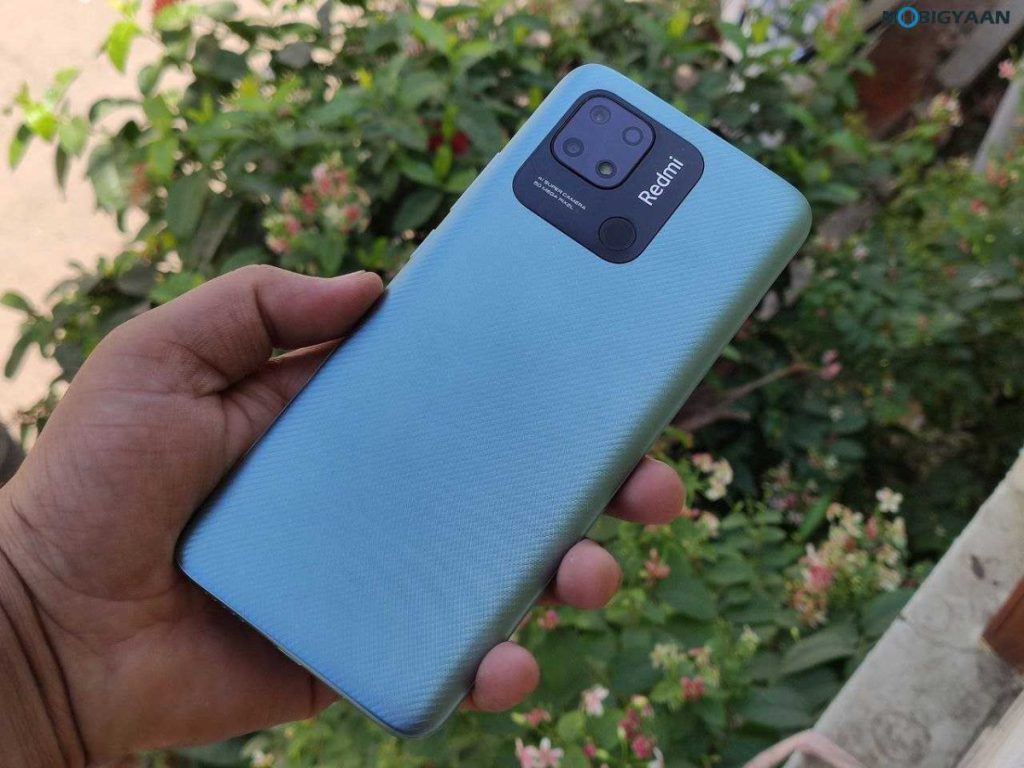
Redmi 10 Specifications
- Display: 6.71-inch IPS LCD display, HD+ resolution, 60 Hz refresh rate, Corning Gorilla Glass 3
- Software: Android 11, MIUI 13.0.3
- CPU: 6nm Qualcomm Snapdragon 680 SoC, up to 2.4 GHz octa-core processor (8x Kryo 265)
- GPU: Adreno 610
- Memory: 4 GB or 6 GB LPDDR4x RAM
- Storage: 64 GB or 128 GB internal storage, expands via microSD card (dedicated)
- Main Camera: Dual cameras (50 MP primary + 2 MP portrait)
- Selfie Camera: 5 MP
- Others: Fingerprint scanner (back)
- Cellular: 4G LTE, dual SIM, dual standby
- Battery: 6,000 mAh battery
- Charging: 18W fast charging
- Price: ₹10,999 (4 GB + 64 GB), ₹12,999 (6 GB + 128 GB)
The Redmi 10 is the latest smartphone under the Redmi 10 Series and lies under the affordable midrange category. The primary feature of the smartphone is its massive 6,000 mAh battery which leads to longer battery life and is aided by an 18W fast charging. Another major highlight is its 6nm Qualcomm Snapdragon 680 SoC which is powerful enough for this segment.
On the design front, the Redmi 10 offers a textured back with a smudge-free surface. The camera on the back has a new look that blends with its design, you can see the fingerprint scanner right under the camera module and a large Redmi logo. The Redmi 10 comes in three color variants – Midnight Black, Pacific Blue, and Caribbean Green. You will see dual cameras on the back with 50 MP as the main camera and a secondary 2 MP for portraits.
The Redmi 10 has a 6.71-inch IPS LCD display with an HD+ resolution and uses a standard 60 Hz refresh rate. It has a 400 nits brightness and the screen is protected by Corning Gorilla Glass 3. The fingerprint scanner isn’t side-mounted, rather on the backside where the camera lies.
The bottom side has a USB Type-C port, a loudspeaker, and a microphone while the top side has a 3.5 mm audio port. The power key and volume control are on the right while the left side has a SIM tray supporting two 4G SIM cards and a dedicated microSD card slot.
About the specifications of the phone, it has a 6nm Qualcomm Snapdragon 680 octa-core CPU with Kryo 265 cores clocked up to 2.4 GHz. In terms of processing power, the primary competitor of the Redmi 10 is the realme 9i while it’s also challenged by Narzo 50 at a similar price.
About the CPU, the Qualcomm Snapdragon 680 is a midrange SoC manufactured in a 6nm process consisting of 4+4 core configurations, four high-performance Kryo 265 Gold cores clocked at 2.4 GHz, and four power-efficient Kryo 265 Silver cores clocked at 1.9 GHz. The chip integrates an Adreno 610 GPU for gaming and GPU-intensive tasks.
The Redmi 10 comes in two RAM and storage variants, one with 4 GB RAM and 64 GB storage priced at ₹10,999 while the higher variant is 6 GB RAM and 128 GB storage priced at ₹12,999. It comes with RAM extension technology which extends the RAM up to 8 GB.
The Redmi 10 runs on Android 11 with MIUI 13.0.3 user interface on top. The security patch available on the phone is 2022/02/01. The interface offers loads of features, however, is limited by the Android version, it doesn’t come with Android 12 out-of-the-box.
The Redmi 10 packs a punch with its 6nm Snapdragon 680 octa-core CPU (also found on the Redmi Note 11). It is backed with a massive 6,000 mAh battery for longer battery runtimes. The price for the base variant (4 GB RAM + 64 GB storage) starts at ₹10,999 which is a pretty good deal for performance users, while the higher 6 GB + 128 GB variant has a ₹12,999 price tag at which you can grab the Redmi Note 11 (64 GB) with the same processor, but, with an AMOLED display at a higher resolution.

